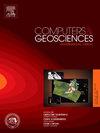基于FreeMatch和ms - pick的半监督学习微震信号初到拾取方法
IF 4.2
2区 地球科学
Q1 COMPUTER SCIENCE, INTERDISCIPLINARY APPLICATIONS
引用次数: 0
摘要
这些信号的小幅度和低信噪比(SNR)使得挑选到达具有挑战性。基于深度学习的微地震信号采集方法的最新进展有效地解决了传统方法效率低下和不准确的问题。然而,这些方法通常需要大量的训练数据,并且大量的规模和标记工作严重阻碍了基于深度学习的首次到达选择方法的进一步发展。近年来,半监督方法解决了小样本问题。该方法建立了半监督学习框架,在样本增强后自动标注微震信号,可以显著减少样本标注所需的时间。然而,在微地震领域,微地震数据面临着低信噪比和伪标签质量差的问题,这影响了半监督学习方法的性能。因此,本研究提出了一种结合FreeMatch和ms - pick的半监督方法,称为semi- ms - pick,以提高小样本标注条件下微震到达拾取的精度和效率。利用合成信号和真实微震记录,在低信噪比条件下进行了初到拾取实验。实验结果表明,该方法优于FixMatch、Π Model、Pseudo Label和admatch方法,可达到73%的TOP-1准确率,而其他半监督方法均不超过50%的TOP-1准确率。该方法可以超越典型的基于深度学习的微震信号初到拾取方法,在微震数据的智能处理中表现出良好的性能。本文章由计算机程序翻译,如有差异,请以英文原文为准。
A first arrival picking method of microseismic signals based on semi-supervised learning using FreeMatch and MS-Picking
The small magnitude and low signal-to-noise ratio (SNR) of these signals make picking the arrivals challenging. Recent advancements in deep learning-based methods for picking the first arrivals of microseismic signals have effectively addressed traditional methods' inefficiency and inaccuracy problems. However, these methods often require a large amount of training data, and the substantial size and labeling effort significantly hinder further development of deep learning-based first-arrival picking methods. In recent years, semi-supervised methods have dealt with the small-sample problem. This approach establishes a semi-supervised learning framework, automatically labeling microseismic signals after sample augmentation, which can significantly reduce the time required for sample labeling. Still, in the microseismic domain, microseismic data face issues of low SNR and poor quality of pseudo-labels, which affects the performance of semi-supervised learning methods. Therefore, this study proposes a semi-supervised method that uses FreeMatch and MS-Picking, called Semi-MS-Picking, to improve the accuracy and efficiency of microseismic arrival picking under small sample labeling conditions. The first-arrival picking experiments are conducted under low-SNR conditions using synthetic signals and real microseismic records. The experimental results showed that the proposed Semi-MS-Picking method can outperform the FixMatch, Π Model, Pseudo Label, and AdaMatch methods, achieving a picking accuracy of 73% TOP-1 accuracy, while the other semi-supervised methods do not exceed the 50% TOP-1 accuracy. The proposed method can surpass typical deep learning-based first-arrival picking methods for microseismic signals, demonstrating good performance in intelligent microseismic data processing.
求助全文
通过发布文献求助,成功后即可免费获取论文全文。
去求助
来源期刊

Computers & Geosciences
地学-地球科学综合
CiteScore
9.30
自引率
6.80%
发文量
164
审稿时长
3.4 months
期刊介绍:
Computers & Geosciences publishes high impact, original research at the interface between Computer Sciences and Geosciences. Publications should apply modern computer science paradigms, whether computational or informatics-based, to address problems in the geosciences.
 求助内容:
求助内容: 应助结果提醒方式:
应助结果提醒方式:


